
The Primary Use Cases
of a Meta-Layer
Explore how the Meta-Layer transforms web experiences—making them more personal, collaborative, ethical, and intelligent.
So much more is possible above the webpage than most have ever imagined. These nine use case primitives unlock billions of new interactions—each one an opportunity for exchange or creation of value.
Primary Use Cases Enabled by a Meta-Layer
These nine foundational "use case primitives" define what becomes possible when a meta-layer is added to the web. Each one unlocks a new dimension of interaction, presence, or intelligence—together, they form the building blocks for a more open, contextual, and human-centric internet.
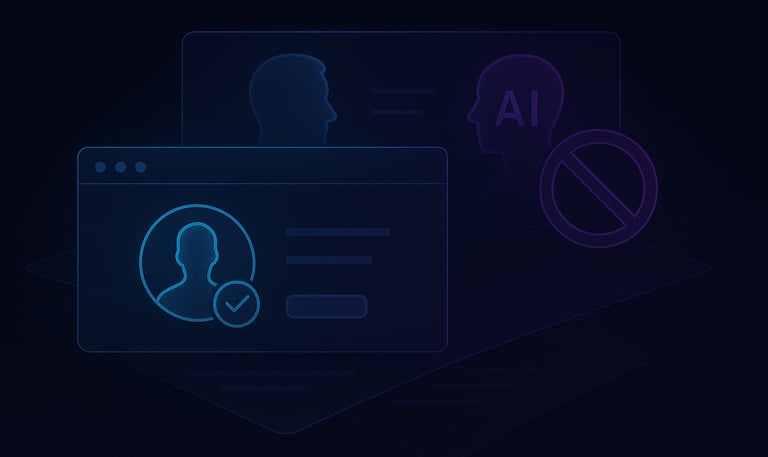

Innovative Insights
The meta-layer ensures that participants are engaging with real, verified individuals, significantly reducing the risk of bots or AI-generated profiles undermining interactions. Through strong authentication systems, reputation management, and governance mechanisms, Safe Digital Space creates an environment where participants can confidently interact, knowing their personal data and privacy are protected. Furthermore, the meta-layer actively identifies and restricts AI agents from pretending to be human or influencing virality or reputation systems (Overweb Pillar #1).
Example: A participant on a professional community site can trust that the people they encounter as verified individuals, preventing bots or AI-generated profiles from manipulating discussions or interactions.


1. Safe Digital Space
2. On-Page Presence
Participants can choose to reveal their presence on webpages, allowing them to meet, interact, and collaborate in real-time with others who are browsing the same content. This creates a new social layer that fosters spontaneous connections and meaningful engagements across the web (Overweb Pillar #2).
Example: While exploring a research paper, a participant notices colleagues from their field are also on the page. They can start a real-time conversation, ask questions, or collaborate on ideas directly above the content.
On-Page Interactions allow participants to engage directly with content through annotations, comments, and smart tags. These interactions are tied to specific locations on the webpage, providing participants with context and insights without disrupting their experience. participants can interact with overlay applications, enriching the page with added functionality or information (Overweb Pillar #3).
Example: A student reading an online textbook can leave annotations explaining difficult concepts, helping future readers to better understand the material, or activate smart tags that link to supplemental resources.
3. On-Page Interactions
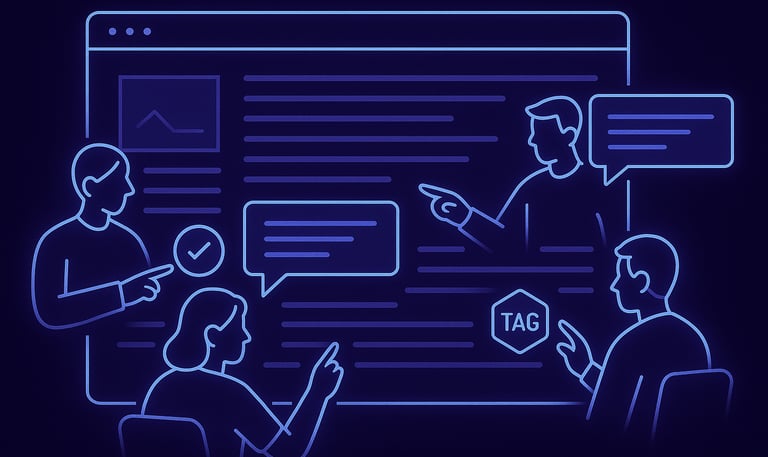

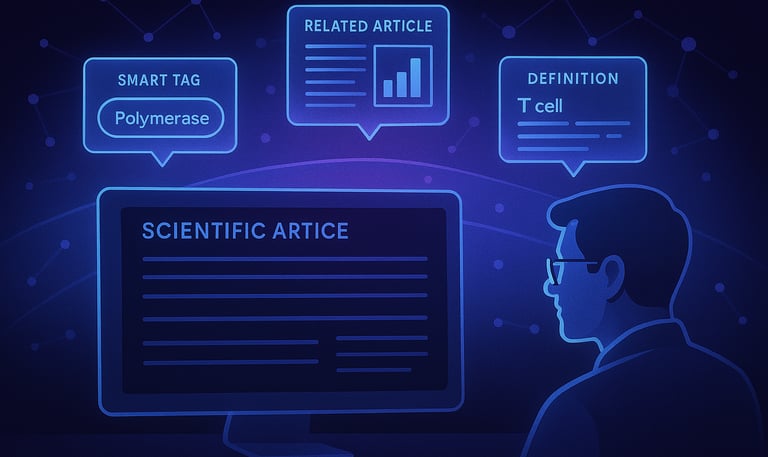

4. Contextual Awareness
The meta-layer enhances participants' awareness by providing context around whatever they are focusing on. Through smart tags, annotations, and insights from meta-communities, participants can access relevant background information, related content, or additional resources that improve their understanding in real-time.
Example: As a reader browses a scientific article, related research papers and definitions of technical terms automatically appear through smart tags, offering deeper insights and a more comprehensive understanding.


5. Meta-Communities
Meta-communities enable groups to meet, interact, and collaborate across multiple webpages. Whether working on a shared project or simply discussing topics of interest, meta-communities persist across the web, allowing members to stay connected and engage in real-time, directly tied to the content they’re viewing.
Example: A group of developers working on an open-source project can meet and collaborate on specific documentation pages, discussing code snippets and sharing improvements without leaving the webpage.
6. AI Containment
In the meta-layer, AI agents are fully transparent and contained within strict governance rules. participants are always aware when they are interacting with AI, and AI systems are restricted from influencing critical aspects of the web experience, such as virality or reputation systems. These mechanisms ensure that AI operates ethically and does not disrupt the trustworthiness of the environment.
Example: When browsing product reviews, a participant can easily see which reviews were generated by AI and which were written by verified human participants. AI-generated reviews do not affect the product’s overall rating, preventing manipulation by bots or AI algorithms.
The meta-layer allows participants to maintain control over their personal data and privacy. Participants decide how their data is shared and used, allowing for a personalized experience without compromising data sovereignty. This empowers participants to interact with the web on their own terms, with full transparency and control over their digital footprint.
Example: A participant visiting a news site can choose whether or not to share their reading habits in exchange for personalized content recommendations, maintaining control over how their data is used while customizing their experience.
7. Data Sovereignty and Personalization
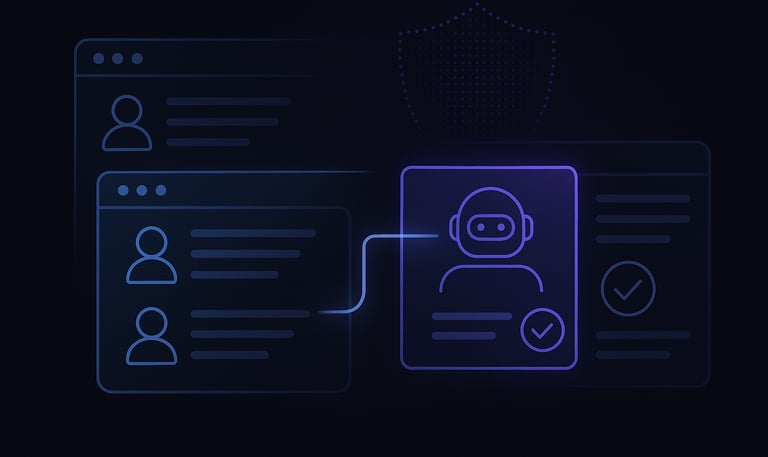



8. Developer and Community Incentives


Developers can build applications that work across all relevant webpages, enhancing the content experience without being limited to specific platforms. This enables developers to engage with a broad community of meta-layer participants, while the meta-layer handles complex technical issues like strong authentication, participant uniqueness, and data sovereignty.
Example: A developer builds an overlay application that enhances e-commerce sites with community-generated product recommendations, allowing participants to leave reviews that follow the product across different platforms.
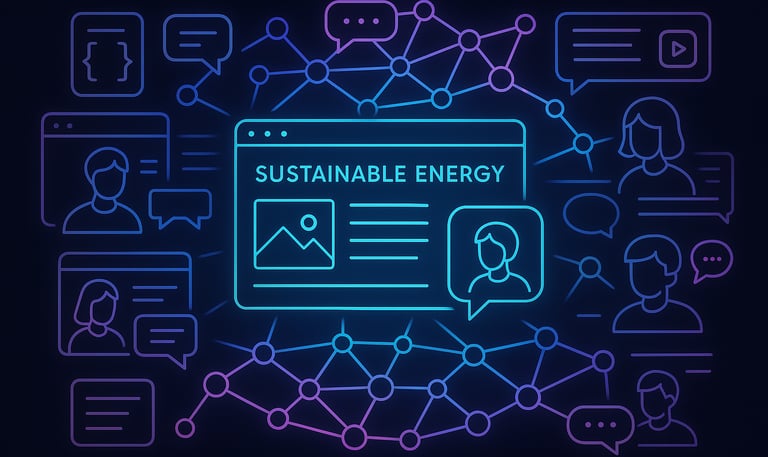

9. Interconnected Context Graph
The meta-layer enables participants and developers to connect relevant online content through a shared context graph, which enhances discoverability and relevance. This allows participants to navigate content with enhanced context and meaning, creating a richer and more interconnected web experience.
Example: While reading a blog post about sustainable energy, a participant sees related content and previous discussions from across different platforms, connected through the content graph, offering a comprehensive view of the topic.
The meta-layer initiative transformed my perspective on technology, making innovation feel accessible and impactful.
Alex Turner

Innovative ideas come to life here! The meta-layer initiative is truly a game-changer in digital interaction.
Jamie Lee

★★★★★
★★★★★
Contribute | Build | Participate
Join us to shape the future of the web.
Connect
© 2025. The Meta-Layer Initiative. All rights reserved.
Ecosystem
Bridgit DAO
Presence AI
Partners
Learn
About
What is a Meta-Layer
Meta-Layer Infra SIG
Join Us
Onchain
Digital Badge
FAQ
Glossary
Roadmap
Blog
